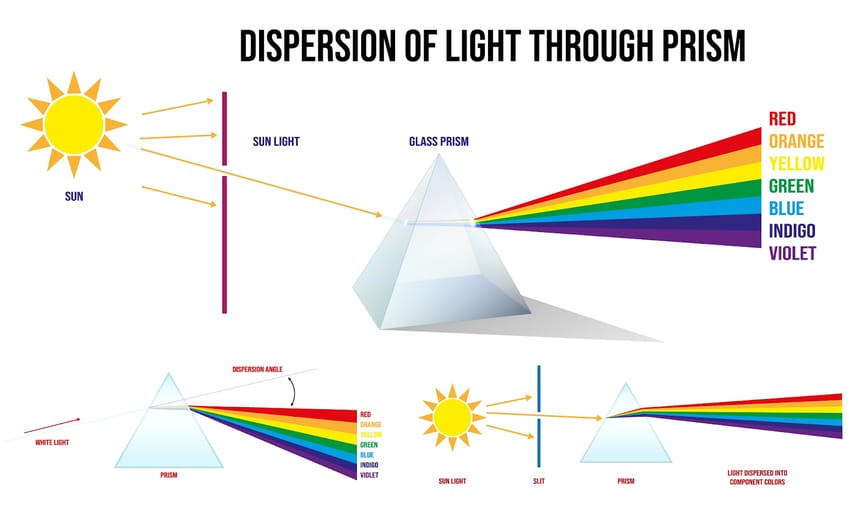How Many Colours Are There In Sunlight?
Seven Colours
Every colour in the VIBGYOR pattern, including violet, indigo, blue, green, yellow, orange, and red, may be seen when the sunlight is divided into a spectrum of colours like a rainbow. This leads to the idea that sunlight is nothing more than a combination of seven colours. White light is made up of these seven colours. The spectrum's longest wavelength is red light, while its shortest wavelength is blue light.
Blue light from the sun's shorter waves quickly scatters when it strikes air molecules. Consequently, the sky seems blue. Violet and indigo colours are absorbed in the top layer together with blue colour, leaving red, orange, and yellow light left. These wavelengths of light scatter and appear primarily in yellow and red colours when interacting with atmospheric dust particles.
As a result, the sun's colour varies during sunrise and sunset. The sun's rays are exposed to the least amount of interference when it is directly overhead of us in the late morning and midday since the distance they must travel is the shortest at those times. As a result, the sky seems blue, and the sun's rays appear yellow during this time due to the scattering of blue light.
The sun rises from the horizon at sunrise because it is furthest away. The light rays must travel through the atmosphere across a significantly greater distance. They are, therefore, undoubtedly more susceptible to interference, which causes more scattering. Red light is hence the colour that is least dispersed. The sun appears to be moving towards the horizon at sunset due to the same phenomena, which causes the sun's colour to appear to be shifting colours of red and orange at dawn and twilight.
Examples:
Sunlight splits into several colours as it travels through the prism.

White light can create a band of seven colours using a glass prism, a narrow light beam, and a white wall. Keep this setup close to a window. Place the glass prism such that light from the window shines on one side of it before striking the white wall. As you can see, the light reflected on the wall is multicoloured. The white light is divided into seven distinct colours by the prism. Dispersion of light is the term used to describe this division of white light into several colours.
This demonstrates that there are several colours in the sunlight. You might only sometimes see all seven colours in a rainbow. This is a result of how the colours merge. As the light's path is bent to different extents, the seven colours that make up white light are separated. The amount of bending depends on the angle the incident light beam makes with the surface and the refractive indices of the two substances.
Colour dispersion in soap bubbles.
The colour variation on CDs.
The sunlight scattering causes a rainbow in the sky after rainfall.
On wet days when it rains and you are driving a vehicle, water may sometimes flow onto the road. We can notice many colours as the fuel and water combine.
Applications for Admissions are open.
As per latest syllabus. Physics formulas, equations, & laws of class 11 & 12th chapters
JEE Main Important Chemistry formulas
Get nowAs per latest syllabus. Chemistry formulas, equations, & laws of class 11 & 12th chapters
JEE Main high scoring chapters and topics
Get nowAs per latest 2024 syllabus. Study 40% syllabus and score upto 100% marks in JEE
JEE Main Important Mathematics Formulas
Get nowAs per latest syllabus. Maths formulas, equations, & theorems of class 11 & 12th chapters